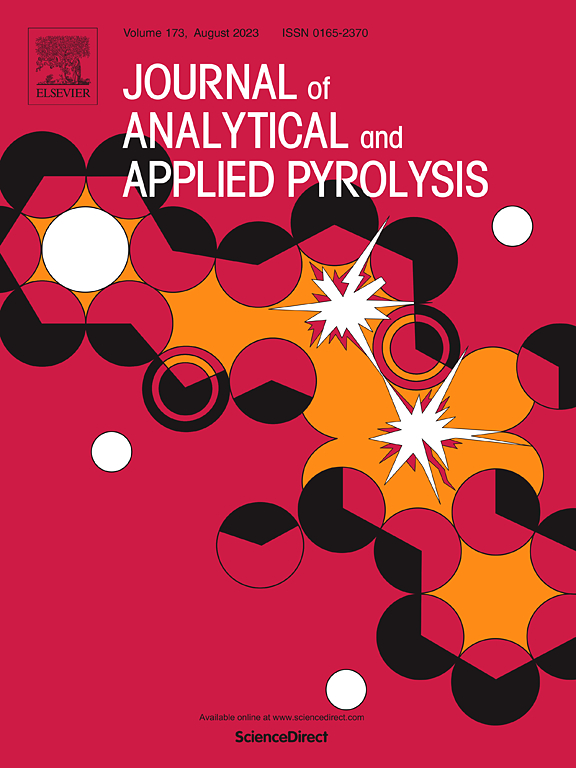Microwave plasma conversion of food waste using carbon foam: Production of heteroatom-doped graphene and combustible gas
IF 5.8
2区 化学
Q1 CHEMISTRY, ANALYTICAL
引用次数: 0
Abstract
The mass production of food waste (FW) has a terrible impact on the environment, but with proper treatment, FW can be transformed into a new resource. Currently, thermal conversion (especially incineration) has been the most common and efficient means of handling FW, but it also entails negative impacts, such as high carbon emissions and lower added value. In this study, a new high-efficiency thermal conversion process is proposed that uses carbon foams to induce the formation of microwave plasma (MP), which generates very high final temperatures to enable the direct conversion of FW into combustible gases and high-value-added heteroatom-doped microwave plasma graphene (HMPG) in 5–20 s. This work investigated the optimal carbonization temperature of the melamine sponge (carbon foam precursor) and the effect of microwave plasma reaction duration on the distribution of the gas products and the properties of HMPG, and HMPG was characterized in detail by Raman spectroscopy, X-ray diffraction, scanning electron microscope, etc. Ultimately, HMPG was tested in potassium ion battery anodes for evaluation of its energy storage potential, and the results showed that the capacities were able to reach ∼270 mAh g−1 at 50 mA g−1 after 60 cycles.
利用泡沫碳对食物垃圾进行微波等离子体转化:生产掺杂杂原子的石墨烯和可燃气体
食物垃圾(FW)的大量产生对环境造成了可怕的影响,但如果处理得当,食物垃圾可以转化为新的资源。目前,热转化(尤其是焚烧)是处理厨余垃圾最常见、最有效的方法,但它也会带来负面影响,如碳排放量高、附加值低等。本研究提出了一种新型高效热转化工艺,利用碳泡沫诱导微波等离子体(MP)的形成,从而产生极高的最终温度,在 5-20 秒内将 FW 直接转化为可燃气体和高附加值的杂原子掺杂微波等离子体石墨烯(HMPG)。这项工作研究了三聚氰胺海绵(碳泡沫前体)的最佳碳化温度以及微波等离子体反应持续时间对气体产物分布和 HMPG 性能的影响,并通过拉曼光谱、X 射线衍射、扫描电子显微镜等对 HMPG 进行了详细表征。最后,在钾离子电池阳极中测试了 HMPG 的储能潜力,结果表明在 50 mA g-1 的条件下,循环 60 次后容量可达 ∼270 mAh g-1。
本文章由计算机程序翻译,如有差异,请以英文原文为准。
求助全文
约1分钟内获得全文
求助全文
来源期刊
CiteScore
9.10
自引率
11.70%
发文量
340
审稿时长
44 days
期刊介绍:
The Journal of Analytical and Applied Pyrolysis (JAAP) is devoted to the publication of papers dealing with innovative applications of pyrolysis processes, the characterization of products related to pyrolysis reactions, and investigations of reaction mechanism. To be considered by JAAP, a manuscript should present significant progress in these topics. The novelty must be satisfactorily argued in the cover letter. A manuscript with a cover letter to the editor not addressing the novelty is likely to be rejected without review.

 求助内容:
求助内容: 应助结果提醒方式:
应助结果提醒方式:


